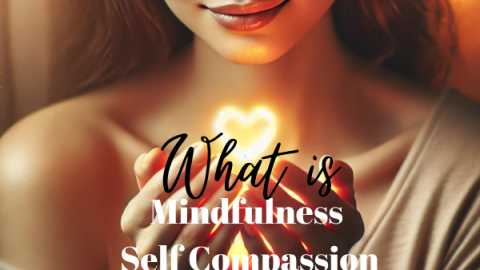The History of Mindfulness: From Ancient Traditions to Modern Science
Mindfulness is more than just a wellness trend— the history of mindfulness reveals it’s a practice with deep historical roots that span cultures and centuries. But where did mindfulness originate, and how did it evolve into the scientifically-backed tool we know today?
In this article, we’ll explore the fascinating history of mindfulness, from its ancient beginnings in Buddhism and philosophy to its modern applications in psychology, healthcare, and everyday life.
What is Mindfulness?
Mindfulness is the practice of being fully present and aware of the current moment, without judgment. It encourages us to observe our thoughts, emotions, and surroundings with curiosity and acceptance.
Today, mindfulness is widely recognized for its benefits in reducing stress, improving focus, and enhancing well-being. But to truly understand its power, we need to look back at where it all began.
The Ancient Origins of Mindfulness
1. Mindfulness in Buddhism
The origins of mindfulness can be traced back over 2,500 years to ancient India, where it was a core teaching of Siddhartha Gautama, the Buddha.
In Theravāda Buddhism, mindfulness is known as Sati, which means “awareness” or “attention.” It plays a key role in the Noble Eightfold Path, which guides practitioners toward enlightenment and liberation from suffering.
The Satipatthana Sutta, an early Buddhist text, outlines mindfulness as a way to cultivate awareness of:
✔ The body (breath, posture, sensations)
✔ Feelings (pleasant, unpleasant, neutral)
✔ Thoughts and mental states
✔ The nature of reality
Monks and laypeople practiced mindfulness through meditation, breathing techniques, and mindful daily activities, believing it could lead to insight and wisdom.
2. Mindfulness Beyond Buddhism
Although mindfulness is strongly associated with Buddhism, similar practices appear in many ancient traditions:
🔸 Hinduism: The concept of Dhyana (meditation) in the Upanishads emphasizes deep concentration and self-awareness.
🔸 Taoism: Laozi’s teachings in the Tao Te Ching encourage effortless awareness (wu wei) and living in harmony with nature.
🔸 Greek Stoicism: Philosophers like Epictetus and Marcus Aurelius promoted self-reflection, emotional regulation, and present-moment awareness.
Mindfulness in the Modern World
3. Zen Buddhism & the Western Influence
By the 12th century, Zen Buddhism (which originated from Chinese Chan Buddhism) brought a new approach to mindfulness—focusing on direct experience and mindful action in daily life.
Fast-forward to the 20th century, mindfulness began influencing Western psychology through the work of Zen teachers like:
🧘 D.T. Suzuki – Introduced Zen to the West in the early 1900s.
🧘 Thích Nhất Hạnh – A Vietnamese monk who wrote The Miracle of Mindfulness (1975), helping mindfulness reach a global audience.
4. Mindfulness-Based Stress Reduction (MBSR) & Science
In the 1970s, Dr. Jon Kabat-Zinn, a researcher at the University of Massachusetts Medical School, pioneered the use of mindfulness in Western medicine. He developed Mindfulness-Based Stress Reduction (MBSR), a secular program designed to help people cope with stress, pain, and illness.
This marked a turning point—mindfulness was now backed by science. Research showed that mindfulness could:
✔ Reduce stress and anxiety (Kabat-Zinn, 1990)
✔ Improve focus and cognitive function (Siegel, 2007)
✔ Help with chronic pain management (Kabat-Zinn et al., 1985)
✔ Support mental health (Mindfulness-Based Cognitive Therapy, MBCT)
Mindfulness Today: A Global Movement
Today, mindfulness is used in:
🌿 Healthcare – Therapists and doctors integrate mindfulness into mental health treatments.
🌿 Education – Schools teach mindfulness to help students focus and manage emotions.
🌿 Workplaces – Companies like Google and Apple offer mindfulness training for employees.
🌿 Daily Life – Millions of people use mindfulness apps (Try my app) and meditation techniques for stress relief.
From Buddhist monks to neuroscientists, mindfulness has traveled across time and cultures, proving itself as a valuable tool for well-being.
Final Thoughts: Why Mindfulness Still Matters
Despite its long history, mindfulness remains just as relevant today as it was 2,500 years ago. In a world full of distractions, stress, and overwhelm, practicing mindfulness allows us to pause, breathe, and reconnect with the present moment.
So next time you feel caught up in worries or rushing through your day, try this simple mindfulness exercise:
🔹 Pause for a moment.
🔹 Take a deep breath.
🔹 Notice your surroundings.
🔹 Observe your thoughts—without judgment.
That’s mindfulness in action. A small step, but a powerful one.
References & Further Reading
📖 Kabat-Zinn, J. (1990). Full Catastrophe Living: Using the Wisdom of Your Body and Mind to Face Stress, Pain, and Illness.
📖 Thích Nhất Hạnh (1975). The Miracle of Mindfulness.
📖 Gethin, R. (1998). The Foundations of Buddhism.
📖 Hadot, P. (1995). Philosophy as a Way of Life.
📖 Siegel, D. (2007). The Mindful Brain: Reflection and Attunement in the Cultivation of Well-Being.
Want to learn more about mindfulness and how to apply it in your daily life? Subscribe to my newsletter for tips, meditations, and mindful living strategies. 💌
✨ How has mindfulness helped you in your life? Let me know in the comments! ✨








